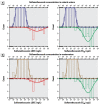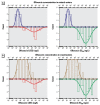Review of the occurrence of anti-infectives in contaminated wastewaters and natural and drinking waters
- PMID: 19479007
- PMCID: PMC2685827
- DOI: 10.1289/ehp.11776
Review of the occurrence of anti-infectives in contaminated wastewaters and natural and drinking waters
Abstract
Objective: Anti-infectives are constantly discharged at trace levels in natural waters near urban centers and agricultural areas. They represent a cause for concern because of their potential contribution to the spread of anti-infective resistance in bacteria and other effects on aquatic biota. We compiled data on the occurrence of anti-infectives published in the last 24 years in environmental water matrices. The collected information was then compared with the available ecotoxicologic values to evaluate potential environmental concerns.
Data sources: We used Web of Science and Google Scholar to search for articles published in peer-reviewed journals written in the English language since 1984.
Data extraction: Information on compound concentrations in wastewaters and natural and drinking waters, the source of contamination, country of provenance of the samples, year of publication, limits of quantification, and method of analysis was extracted.
Data synthesis: From the 126 different substances analyzed in environmental waters, 68 different parent compounds and 10 degradation products or metabolites have been quantified to date. Environmental concentrations vary from about 10(-1) to 10(9) ng/L, depending on the compound, the matrix, and the source of contamination.
Conclusions: Detrimental effects of anti-infectives on aquatic microbiota are possible with the constant exposure of sensitive species. Indirect impact on human health cannot be ruled out when considering the potential contribution of high anti-infective concentrations to the spreading of anti-infective resistance in bacteria.
Keywords: antibacterials; antibiotics; antimicrobials; aquatic environment; drinking water; groundwater; resistance; surface water; wastewater.
Figures


Similar articles
-
Global occurrence of anti-infectives in contaminated surface waters: Impact of income inequality between countries.Environ Int. 2015 Jul;80:89-97. doi: 10.1016/j.envint.2015.04.001. Epub 2015 Apr 21. Environ Int. 2015. PMID: 25910860
-
Sources, pathways, and relative risks of contaminants in surface water and groundwater: a perspective prepared for the Walkerton inquiry.J Toxicol Environ Health A. 2002 Jan 11;65(1):1-142. doi: 10.1080/152873902753338572. J Toxicol Environ Health A. 2002. PMID: 11809004 Review.
-
Perfluorinated surfactants in surface and drinking waters.Environ Sci Pollut Res Int. 2006 Sep;13(5):299-307. doi: 10.1065/espr2006.07.326. Environ Sci Pollut Res Int. 2006. PMID: 17067024
-
Concentration of organochlorine pollutants in surface waters of the central European biosphere reserve Krivoklatsko.Environ Sci Pollut Res Int. 2007 Mar;14(2):94-101. doi: 10.1065/espr2006.10.353. Environ Sci Pollut Res Int. 2007. PMID: 17455818
-
Chemicals of emerging concern in the Great Lakes Basin: an analysis of environmental exposures.Rev Environ Contam Toxicol. 2010;207:1-93. doi: 10.1007/978-1-4419-6406-9_1. Rev Environ Contam Toxicol. 2010. PMID: 20652664 Review.
Cited by
-
Occurrence and abundance of antibiotics and resistance genes in rivers, canal and near drug formulation facilities--a study in Pakistan.PLoS One. 2013 Jun 28;8(6):e62712. doi: 10.1371/journal.pone.0062712. Print 2013. PLoS One. 2013. PMID: 23840297 Free PMC article.
-
Selection of antibiotic resistance at very low antibiotic concentrations.Ups J Med Sci. 2014 May;119(2):103-7. doi: 10.3109/03009734.2014.904457. Epub 2014 Apr 3. Ups J Med Sci. 2014. PMID: 24694026 Free PMC article. Review.
-
Environmental dissemination of antibiotic resistance genes and correlation to anthropogenic contamination with antibiotics.Infect Ecol Epidemiol. 2015 Sep 8;5:28564. doi: 10.3402/iee.v5.28564. eCollection 2015. Infect Ecol Epidemiol. 2015. PMID: 26356096 Free PMC article.
-
Antibiotic Resistant Superbugs: Assessment of the Interrelationship of Occurrence in Clinical Settings and Environmental Niches.Molecules. 2016 Dec 27;22(1):29. doi: 10.3390/molecules22010029. Molecules. 2016. PMID: 28035988 Free PMC article. Review.
-
Distribution of quinolones, sulfonamides, tetracyclines in aquatic environment and antibiotic resistance in indochina.Front Microbiol. 2012 Feb 22;3:67. doi: 10.3389/fmicb.2012.00067. eCollection 2012. Front Microbiol. 2012. PMID: 22363337 Free PMC article.
References
-
- Adams C, Wang Y, Loftin K, Meyer M. Removal of antibiotics from surface and distilled water in conventional water treatment processes. J Environ Eng. 2002;128:253–260.
-
- Al-Ahmad A, Daschner FD, Kummerer K. Biodegradability of cefotiam, ciprofloxacin, meropenem, penicillin G, and sulfamethoxazole and inhibition of waste water bacteria. Arch Environ Contam Toxicol. 1999;37(2):158–163. - PubMed
-
- Alexy R. What do we know about antibiotics in the environment? In: Kümmerer K, editor. Pharmaceuticals in the Environment: Sources, Fate, Effects and Risks. Berlin: Springer; 2004. pp. 209–221.
-
- Ashton D, Hilton M, Thomas KV. Investigating the environmental transport of human pharmaceuticals to streams in the United Kingdom. Sci Total Environ. 2004;333(1–3):167–184. - PubMed
-
- Babić S, Mutavdžic D, Ašperger D, Horvat AJM, Kaštelan-Macan M. Determination of veterinary pharmaceuticals in production wastewater by HPTLC-videodensitometry. Chromatographia. 2007;65(1):105–110.
Publication types
MeSH terms
Substances
LinkOut - more resources
Full Text Sources
Other Literature Sources
Research Materials
Miscellaneous

